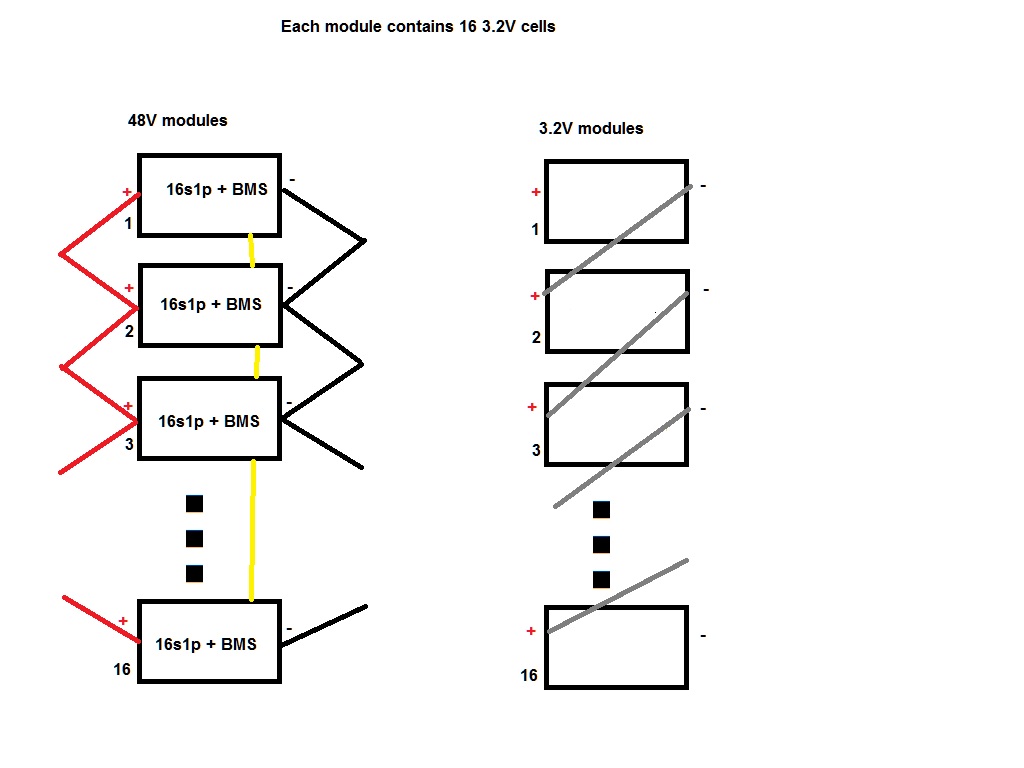I have been wondering about 48V LiFePO4 battery implementations. I have searched the site but have not found a post addressing this issue, so thought I would post it.
Generally speaking, most 48V batteries that are available on the market for home use can be considered a 2.5kWh – 15kWh module. They usually consist of 16 LiFePO4 cells (in 16s1p configuration, or sometimes 32 cells in 16s2p) and a controlling BMS, where the BMS resides within the module and communicates with the inverter/charger through RS485 or CAN. Victron publishes a list of compatible/supported batteries.
When more storage capacity is needed, 2 or more identical modules are connected in parallel. As the inverter/charger needs to know the status of all the battery modules installed, many manufacturers designate one module's BMS as master, which communicates to the inverter/charger. The master BMS supports a limited number of slave BMSs that are connected to the master BMS.
So, when 15kWh is needed, there is the choice of installing 1 x 15kWh module or 6 x 2.5kWh modules (or 3 x 5kWh, etc). Using only one 15kWh module reduces complexity as there is no BMS – BMS communication required.
A similar solution is not so easy to implement when considering larger systems (say 100kWh), because to my knowledge all manufacturers use the modular approach at the 48V level to achieve higher storage capacities.
Assuming a 10kWh module uses 16 x 200Ah LiFePO4 cells, a 100kWh battery made up of 10 of these modules would consist of 10 x (16 x 200Ah + BMS).
What happens when we parallel at the 3.2V rather than 48V levels?
Rather than using 10 x 48V 200Ah 16s1p modules (each with an internal BMS that need to communicate with each other as well as the inverter/charger), the installer would use 16 x 3.2V 1s10p modules (if available), connected to one external BMS that is sized for the particular application (if available).
I realise that the market for 100kWh batteries is limited, but have been wondering if a 16s10p battery configuration, with a suitably sized BMS,as described above would not make things a lot easier.
Your thoughts are appreciated.
Note that the 100kWh above was arbitrarily chosen as an example to illustrate the point I am trying to get across.

 Assume each module above contains 16 x 200Ah 3.2V cell, i.e. they each store 10kWh of energy. That size is reasonable easy to transport and handle.
Assume each module above contains 16 x 200Ah 3.2V cell, i.e. they each store 10kWh of energy. That size is reasonable easy to transport and handle.